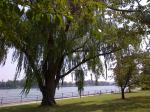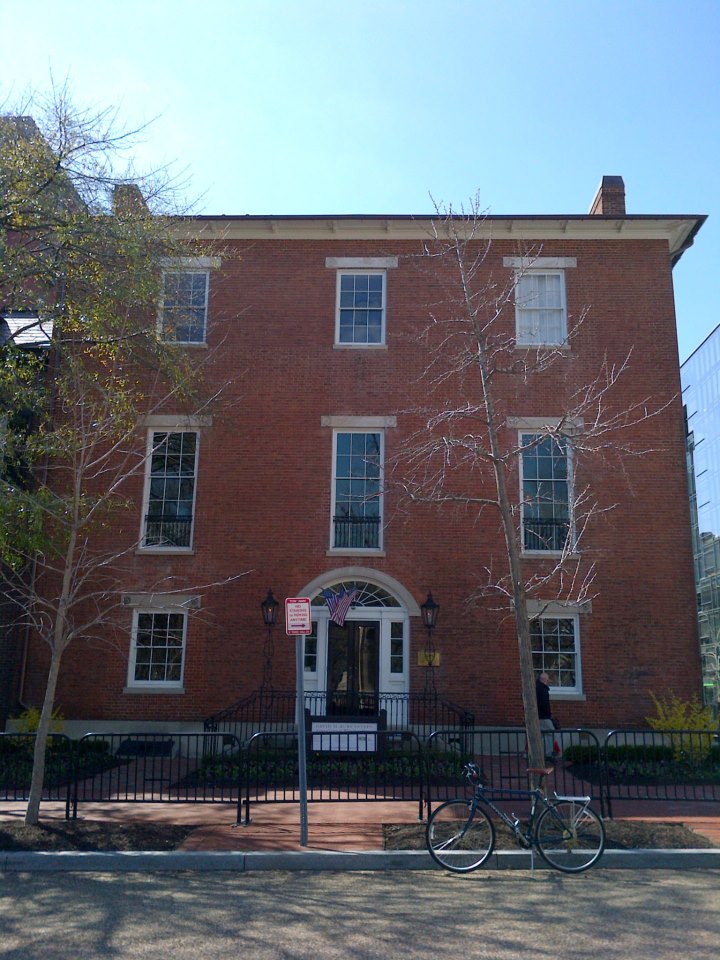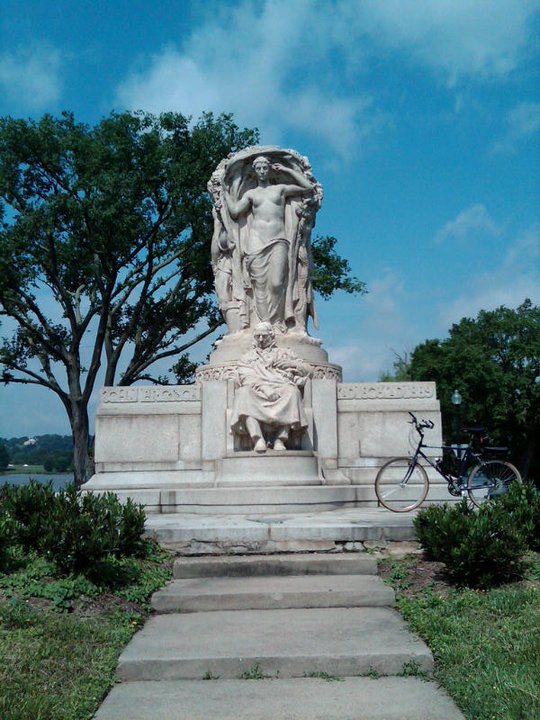I rode over to Virginia during this daily bike ride, and during my ride I happened upon a small park tucked in among the massive apartment and office buildings of Crystal City. It is located on South Joyce Street in Arlington (MAP), and named Grace Murray Hopper Park, who was a rear admiral in the United States Navy. Finding a park named after a female rear admiral piqued my curiosity. So I did some research to find out what I could about her when I got home. And I found out that she was a very accomplished and interesting person.
Grace Brewster Murray was on December 9, 1906. That same year, Xerox, a digital office machine brand, was founded in Rochester, New York. Albert Einstein had just published his “Theory of Relativity.” And the Women’s Suffrage movement was soon to receive major-party support and worldwide attention. An era of scientific and social innovation and eruption was about to begin. Change was on the horizon. And Grace would eventually contribute greatly to that change.
Grace was born in New York City, the eldest of three children born to Walter Fletcher Murray and Mary Campbell Van Horne. She attended private school at the Hartridge School in Plainfield, New Jersey. At the age of 16, Grace applied for early admission to Vassar College, but was initially rejected because her test scores in Latin were too low. She reapplied the following year and was admitted. She graduated Phi Beta Kappa from Vassar in 1928 with a bachelor’s degree with a double major in mathematics and physics. She then went on to earn a master’s degree in 1930, and a Ph.D. in mathematics in 1934, both from Yale University. Hopper began teaching mathematics at Vassar in 1931 and was promoted to associate professor ten years later.
She was married to New York University professor Vincent Foster Hopper from 1930 until their divorce in 1945. They did not have any children. And she did not marry again, but chose to retain the surname of Hopper.
The Navy had always played an important role in Grace’s family because her great-grandfather served in the Civil War as a Navy admiral. And when World War II broke out while Grace was still teaching at Vassar, she attempted to enlist in the Navy. But she was rejected because of her age of 34, her low weight, and the importance of her work as a mathematics professor. Therefore, she continued to teach at Vassar and was promoted to the position of Associate Professor in 1941 – the year of the attack on Pearl Harbor. Two years later Grace left Vassar to join the U.S. Naval Reserve, also known as WAVES. But even for that she would need to get an exemption because she was 15 lbs. under the Navy’s minimum of 120 lbs. But she received a waiver, and went on to graduate first in her class at the Naval Reserve school in Northampton, Massachusetts.
Grace was commissioned a lieutenant and was assigned to the Bureau of Ordnance’s Computation Project at Harvard University, where she worked on Mark I, the first large-scale automatic calculator and a precursor of electronic computers. After the war, she remained at the Harvard Computation Lab for four years as a civilian research fellow. In 1949, she joined the Eckert-Mauchly Computer Corporation, where she helped to develop the UNIVAC I, the first general-purpose electronic computer. Throughout her postwar career in academia and private industry, Hopper retained her naval commission.
Grace initially retired from the Navy in 1966. However, one year later, she was recalled to active duty for a six-month period that turned into an indefinite assignment directing the Navy Programming Languages Group in the Navy’s Office of Information System Planning, standardizing computing languages. She retired again in 1971, but was once again asked to return to active duty in 1972. She was promoted to Captain in 1973, and finally Commodore (later renamed Rear Admiral), the highest peacetime military rank possible, by Presidential appointment by President Ronald Reagan in 1983. She remained on active duty for several years beyond mandatory retirement by special approval of Congress. In 1986, when Rear Adm. Hopper retired for the third and final time from the Navy at the age of 79, she was the oldest officer on active U.S. naval duty.
Following her retirement from the Navy, she was hired by Digital Equipment Corporation. She proposed in jest that she would be willing to accept a position which made her available on alternating Thursdays to be exhibited at their museum of computing as a pioneer, in exchange for a generous salary and unlimited expense account. Instead, she was hired as a full-time senior consultant. In this position, Grace represented the company at industry forums, serving on various industry committees, along with other obligations. She retained that position until her death. She died at home in her sleep of natural causes at at age 85 in 1992. At the time of her death she was a resident of River House Apartments, which is adjacent to the park named in her honor.
Throughout her career she was a computer pioneer, and she came to be known as “Amazing Grace” for her groundbreaking achievements. Some of her achievements and other interesting facts about this amazing woman include:
- Grace was an especially curious child. At the age of seven, her mother discovered she had been dismantling alarm clocks to figure out their inner workings. She had taken apart seven clocks before her mother intervened and limited her to a single clock to tinker with.
- The clock in Rear Admiral Dr. Grace Hopper’s office ran counterclockwise.
- After a moth infiltrated the circuits of Mark I, she coined the term bug to refer to unexplained computer failures.
- The famous quotation “It’s easier to ask for forgiveness than it is to get permission” is often attributed to her.
- A minor planet discovered by Eleanor Helin is named “5773 Hopper” in her honor.
- Women at Microsoft Corporation formed an employee group called Hoppers and established a scholarship in her honor.
- During her lifetime, Hopper was awarded 40 honorary degrees from universities across the world.
- Hopper College, one of the residential colleges of Yale University, was named after her.
- She was awarded The Data Processing Management Association’s Inaugural “Man-of-the-Year” Award.
- She was awarded The National Medal of Technology.
- The U.S. Navy Arleigh Burke-class guided-missile destroyer USS Hopper was named for her.
- Also named after her is he Cray XE6 “Hopper” supercomputer at the National Energy Research Scientific Computing Center.
- The U.S. Naval Academy also owns a Cray XC-30 supercomputer named “Grace,” hosted at the University of Maryland-College Park.
- Hopper was awarded the Defense Distinguished Service Medal, the highest non-combat decoration awarded by the Department of Defense.
- She was interred with full military honors in Arlington National Cemetery.
- On November 22, 2016, she was posthumously awarded the Presidential Medal of Freedom by President Barack Obama.
















































